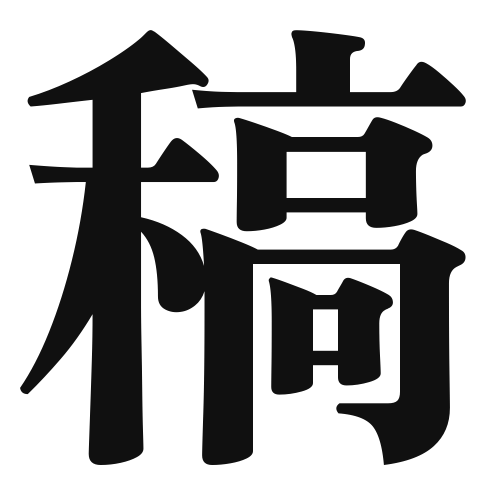1. Overview of Meaning
The kanji “稿” (kō) primarily means “draft” or “manuscript.” It refers to a preliminary version of a written work, such as an article, essay, or any document that is not yet finalized.
2. Formation and Radical
Formation of the Kanji: The kanji “稿” is a phonetic compound (形声文字), which combines the meaning and sound elements. The left part, “毛” (meaning “fur” or “hair”), contributes to the phonetic aspect, while the right part, “高” (meaning “high”), adds to the overall meaning.
Radical: The radical of “稿” is “毛,” which is often associated with hair or fur, but in this context, it relates to the idea of something being in a rough or unrefined state.
3. Examples of Usage
Common Words and Phrases: Some frequently used words that include “稿” are:
- 原稿 (げんこう, genkō) – manuscript
- 草稿 (そうこう, sōkō) – rough draft
Example Sentences in Daily Conversation:
- この原稿を明日までに提出してください。
(Please submit this manuscript by tomorrow.) - 草稿を見せてくれますか?
(Can you show me the rough draft?)
4. Synonyms and Antonyms
Similar Kanji: A similar kanji is “文” (ぶん, bun), which means “text” or “sentence.” While “稿” refers specifically to drafts or manuscripts, “文” encompasses a broader range of written language.
Opposite Kanji: An antonym could be “完成” (かんせい, kansei), meaning “completion” or “finalization,” which represents the finished state of a work, contrasting with the preliminary nature of “稿.”
5. Cultural and Historical Background
Relation to Japanese Culture: In Japanese culture, the process of drafting and revising written works is highly valued, especially in literature and academia. The concept of “稿” reflects the importance of careful preparation and refinement in communication.
Proverbs and Idioms: One relevant saying is “草稿は金なり” (そうこうはきんたり, sōkō wa kintari), which translates to “A rough draft is worth gold,” emphasizing the value of initial ideas and drafts in the creative process.
